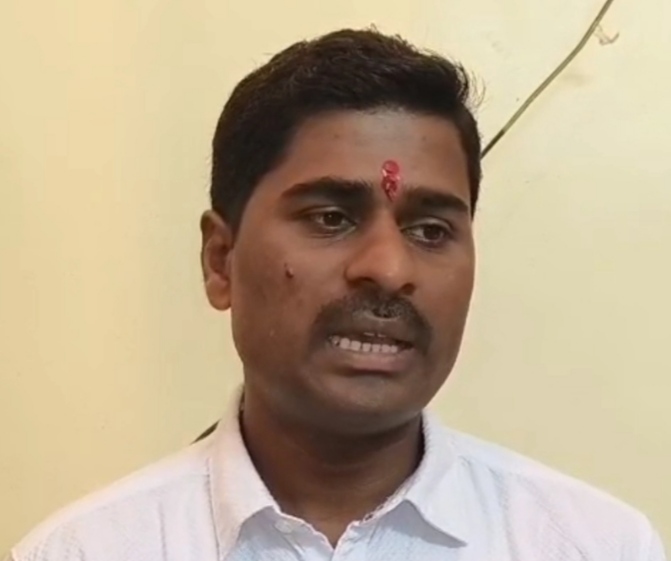Pavan Halwane

Cricket, often called a religion in India, isn’t just about the players. Behind every match, every crucial decision, stand the umpires – the unsung heroes who ensure fair play. Recently, Pavan Halwane from Akola, Maharashtra, brought attention to this vital role by topping the BCCI’s umpire panel exam, proving that passion and perseverance can lead to remarkable achievements, even if the path isn’t directly on the field.
His inspiring story, from a humble farming background to achieving the top rank with an impressive 147.5 out of 150 marks , highlights the dedication required. Despite poverty hindering his professional cricketing aspirations, Pavan continued his love for the game as a PT teacher and coach, eventually transitioning to umpiring with the Akola Cricket Club and Vidarbha Cricket Association for two decades before his big breakthrough.
If Pavan Halwane’s journey sparks your interest in donning the umpire’s hat, here’s a detailed guide on how you can become a cricket umpire in India.
How to Become a Cricket Umpire in India: A Step-by-Step Guide
The path to becoming a BCCI-panel umpire is rigorous and multi-layered, demanding consistent performance and deep knowledge of the game.
- District Level Exam: The journey begins at the grassroots. You must first pass an exam conducted by your local District Cricket Association. This is your entry point into the world of official umpiring.
- State Panel Umpire: After clearing the district exam, the next hurdle is the State Cricket Association exam . Successfully passing this makes you a State Panel Umpire, allowing you to officiate in Under-14 and Under-16 State Association invitation matches. Consistent good performance here can open doors to Under-19 and senior-level invitation matches within your state.
- BCCI Panel Umpire – Level 1: This is where the national dream begins. State associations recommend a limited number of umpires (around 25) to the BCCI. The Level 1 exam is comprehensive, covering the MCC Laws of Cricket, practical scenarios, and includes both oral and written tests.
- BCCI Panel Umpire – Level 2: The pinnacle of domestic umpiring exams, Level 2 is an advanced and more rigorous process conducted by the BCCI over two to three days. It features advanced written tests, a viva voce (with video analysis), and practical umpiring in live match situations.
- Domestic and International Opportunities: Clearing Level 2 opens up exciting opportunities to umpire in prestigious domestic tournaments like the Ranji Trophy, Duleep Trophy, and Vijay Hazare Trophy. Consistent high-quality performance at this level can lead to higher grades and, eventually, the esteemed chance to officiate in international matches.
Qualifications and Skills Required
To embark on this challenging yet rewarding career, certain qualifications and skills are essential:
- Age: Candidates must be between 20 and 45 years old.
- Physical Attributes: Excellent eyesight and robust physical fitness are non-negotiable.
- Education: While a specific degree isn’t mandatory, basic language proficiency is crucial. A sports-related degree can provide an added advantage.
- Cricket Knowledge: A profound understanding of cricket rules, playing conditions, and the ability to make accurate decisions swiftly are paramount. Prior experience playing cricket is highly beneficial, as it helps in grasping the game’s nuances.
Earnings of a Cricket Umpire: A Lucrative Career at the Top
While the lower tiers might not offer substantial pay, reaching the BCCI panel can be quite lucrative:
- BCCI Grade A Umpire: Earns a handsome ₹40,000 per day for a match.
- BCCI Grade B Umpire: Commands ₹30,000 per day for a match.
- Domestic Matches: For a standard four-day match, earnings can accumulate to around ₹1,60,000.
- Indian Premier League (IPL): This is where the earnings significantly jump. On-field umpires can earn ₹3,00,000 per match, while fourth umpires receive ₹2,00,000 per match.
- Lower Levels: State panel umpires might earn ₹1,000-₹1,500 per day, and local match umpires around ₹500 per day, depending on match scheduling.
Challenges in Becoming an Umpire: A Path of Perseverance
Despite the attractive earnings at the elite level, the journey is fraught with challenges:
- Limited Vacancies: BCCI umpire exams are not held regularly; they are conducted only when there’s a shortage of umpires, often with significant gaps ranging from 5 to 15 years between exams.
- High Competition: The selection process is extremely competitive. For instance, in 2016, only 18 out of 700 candidates were selected. More recently, just 26 out of 120 candidates made the cut.
- Multiple Criteria: Success hinges on various factors, including age, state association recommendation, and being in peak form during the selection period.
In conclusion, becoming a cricket umpire, especially at the BCCI level, is a long and arduous journey that demands immense dedication, perseverance, and a deep love for the game. Pavan Halwane’s success story stands as a beacon for all aspiring umpires, proving that with unwavering commitment, even the most challenging paths can lead to glorious achievements.